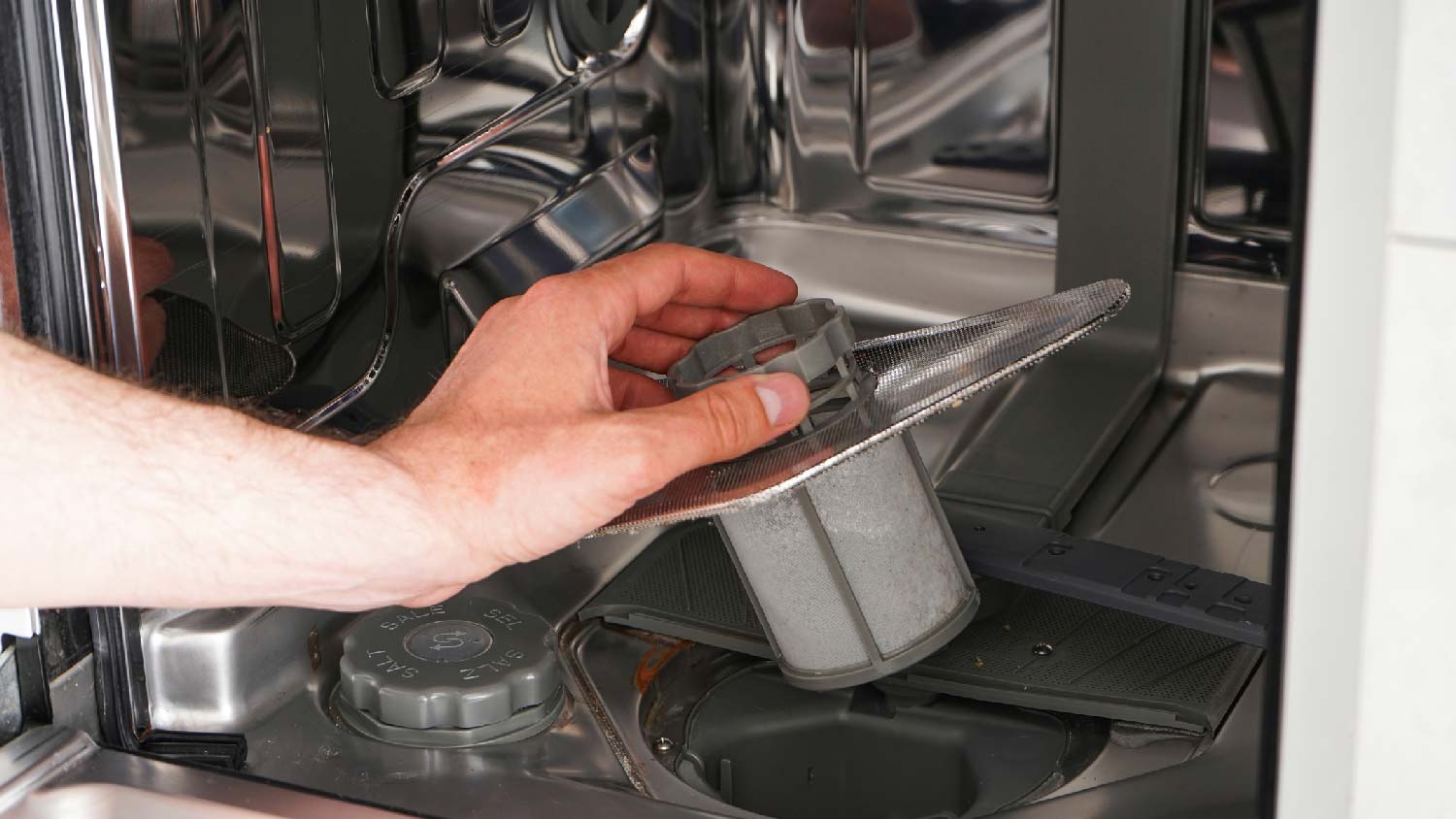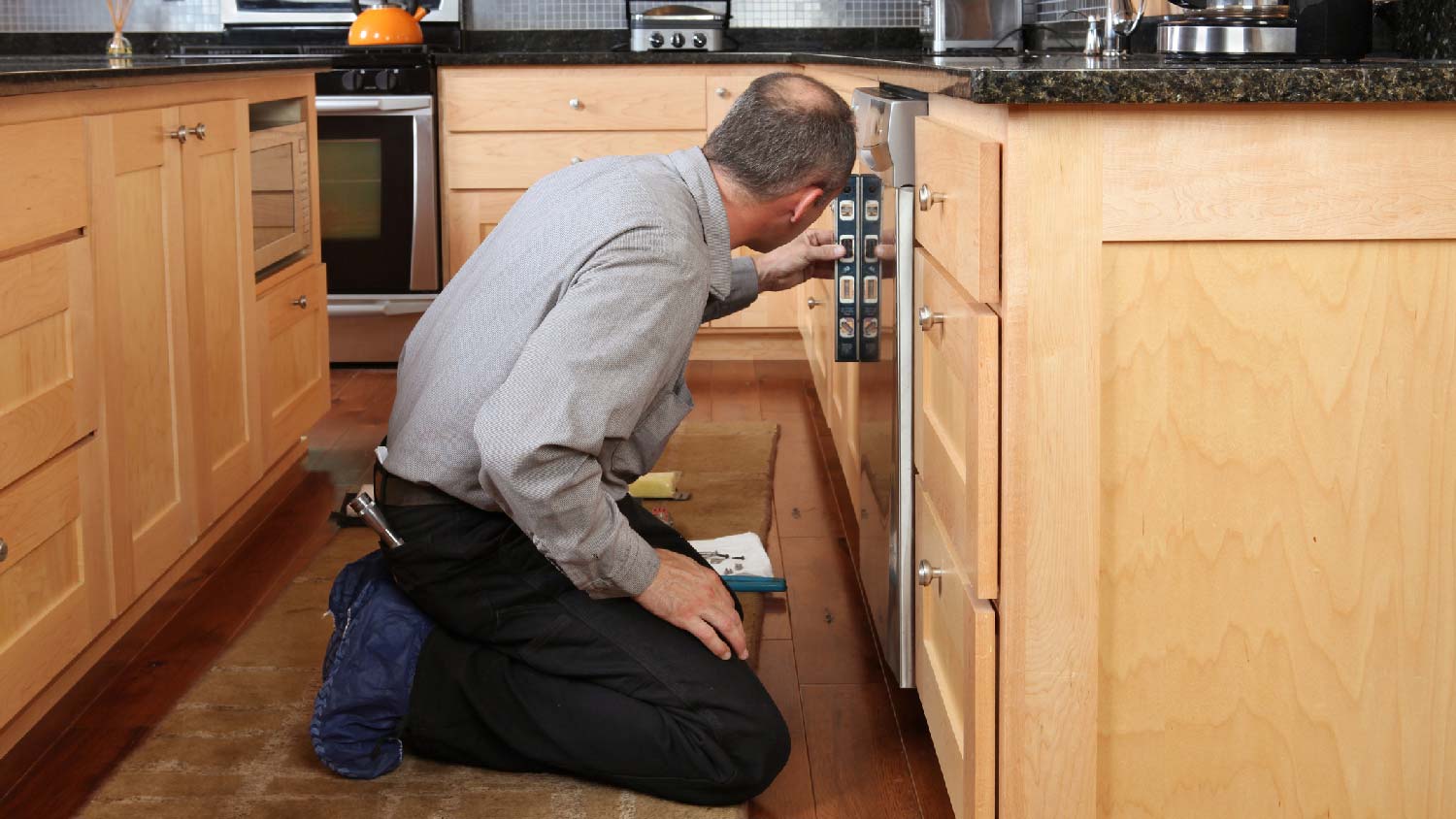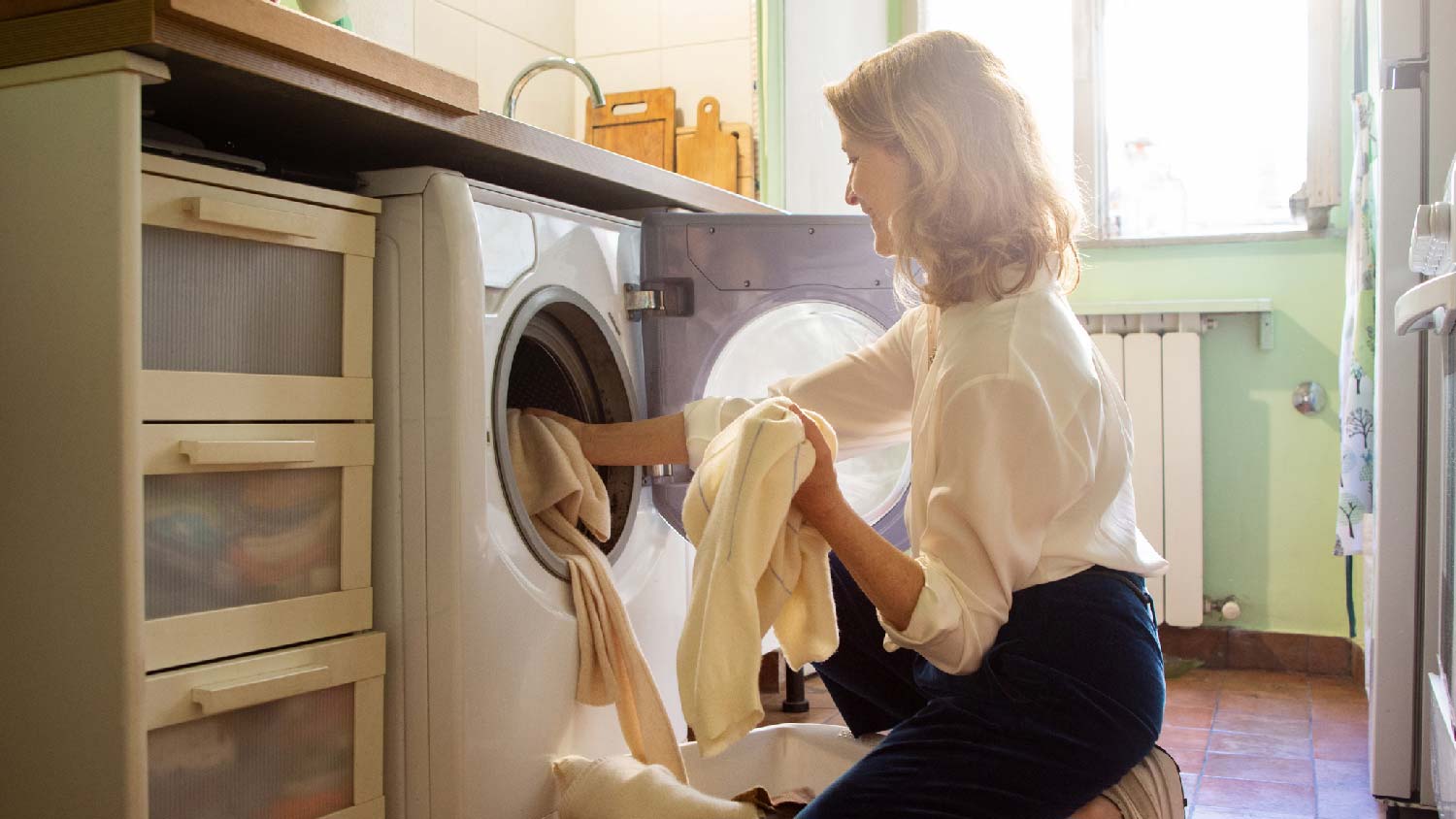
The cost to install a washer and dryer is minimal, but prices can go up if you need to add a gas line, extensive plumbing, or an additional electrical panel.
Your dishwasher should clean up after you—not the other way around


If your dishwasher is flooding, it could be because you’re overfilling it.
Other common causes of dishwasher flooding include clogged filters, damaged door latches, and loose gaskets.
Your dishwasher can overflow if it’s not level or the drain hose is loose.
Many of these issues—including overfilling and clogged filters—are easy to address.
Hiring a pro to repair a dishwasher usually costs between $160 and $300.
After whipping up a tasty home-cooked meal, the last thing you want to see is your dishwasher flooding. But unfortunately, this is a common occurrence that can happen for a number of different reasons, including overfilling and clogged filters. Here are five of the main causes and their solutions.
It’s tempting to load your dishwasher to the brim to clean as many dishes as possible at the same time. But if you pack your dishes too densely, it’s harder for the water to circulate and drain properly, which can lead to dishwasher flooding.
There’s an easy solution here: Don’t overcrowd your dishwasher. You should also make sure not to stack dishes or block the spray arms. In addition, using too much or the wrong type of detergent can also cause your dishwasher to flood. For more specific advice on how to use your particular dishwasher, check your manufacturer’s instructions.

Your dishwasher’s filter collects food particles, grease, and other solids so they don’t clog your drain. However, if the filter gets full, it can block the drain and cause water to back up inside your dishwasher, eventually leading to flooding.
Periodically empty the filter and clean it with soap and water to get rid of any remaining residue. If you aren’t sure where to find the filter, check your user manual.
If your dishwasher door latch is bent or broken, your dishwasher won’t close properly, and water can escape. This can also happen if the door’s rubber seal—also known as the gasket—is loose or damaged.
Inspect the door latch for any signs of damage. In some cases, you can use a screwdriver to tighten a loose latch or straighten out a bent latch. But if it’s completely broken, you’ll need to order a replacement part and swap it out (or hire a local dishwasher repair pro to do it for you).
If the gasket is the problem, you might notice obvious signs of wear and tear, like stretching or cracks. You can also test the gasket by closing the dishwasher door on a piece of paper. If it slides out easily, the gasket isn’t creating a tight enough seal and should be replaced. Here’s how:
Remove the old gasket.
Clean any residue with mild soap and warm water.
Using a hair dryer on low heat, warm up the new gasket to get rid of any creases.
Press the new gasket onto the door, making sure not to stretch it.

When installing a dishwasher, it’s important to make sure it’s level. Otherwise, if it’s tilted, water can pool on that side and leak onto your floor.
First, you’ll need to test if your dishwasher is level—and if not, adjust it accordingly. Here’s how:
Disconnect the power to the dishwasher.
Shut off the water supply to the appliance.
Use a screwdriver to remove the toe kick and access panel at the bottom of the dishwasher.
Place a level inside the dishwasher, both vertically and horizontally.
If it isn’t level, adjust the front and back legs (for vertical leveling) or right or left legs (for horizontal leveling).
Once you’ve adjusted the dishwasher legs to be level, check that the door can close properly.
Reassemble the dishwasher and turn the power and water back on.
After circulating through your dishwasher, the dirty water exits through the drain hose. But if the hose is cracked or loose, it can leak water. Similarly, a clogged hose won’t drain effectively, which can lead to water collecting inside your dishwasher and seeping out onto the floor.
Turn off the power to the dishwasher.
Shut off the water to the appliance.
Use a screwdriver to remove the access panel at the bottom of the dishwasher.
With a flashlight, inspect the hose for damage. If you find any, you’ll need to replace it.
If you don’t see any damage, gently move the hose to see if it’s loose. If so, you can tighten it.
To test for a clog, disconnect the hose fastener with a screwdriver and fill the bottom of the dishwasher with water to see if it passes through the hose. If not, you have a clog.
To unclog the hose, push a bottle brush or straightened wire hanger through it. Be careful not to perforate the flexible hose material.
Reattach the hose and access panel.
Turn on the power and water supply.
Run a rinse cycle with hot water to get rid of any leftover debris.
If you’ve tried these DIY-friendly dishwasher repairs but your dishwasher is still flooding, consider calling a professional. There could be an issue with one of your dishwasher’s more technical components, like the float switch or water inlet valve, and those types of repairs are best left to the pros.
From average costs to expert advice, get all the answers you need to get your job done.

The cost to install a washer and dryer is minimal, but prices can go up if you need to add a gas line, extensive plumbing, or an additional electrical panel.

Ice maker repair costs are often less expensive than replacing an ice maker entirely. Discover which parts are easy to fix and which require a professional.

Factors affecting dishwasher repair cost include the type of repair needed, age of the dishwasher, and cost of labor. Use this guide to learn if you need to budget for a repair or a new appliance.

Does your washer sound like it wants to leave your house? You can fix this issue in just a few minutes. Keep reading to learn how to balance a washing machine.

Is your washing machine shaking violently? The solution can be a simple fix or something for a pro. Here's how to know and what to do about it.
.jpg?impolicy=leadImage)
Why is my wash machine flooding when on hot water? Discover why this common problem happens, what you can do about it, and who to call to fix it.